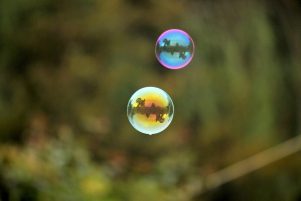All the Time in the World
Article By Sivan Barzilay
 For many of us who live in big cities, Time is something we always lack. We find ourselves struggling to reach places on time, to submit our work on time, to wake up on time, and the list can go on and on… If only someone could give us a little more time to complete everything we want to. If only someone could teach us how to stop time from always moving forward, as if it is falling through our fingers.
For many of us who live in big cities, Time is something we always lack. We find ourselves struggling to reach places on time, to submit our work on time, to wake up on time, and the list can go on and on… If only someone could give us a little more time to complete everything we want to. If only someone could teach us how to stop time from always moving forward, as if it is falling through our fingers.
Then came COVID-19, and among many other things, it had some impact on the way we work with time, the way we experience the present moment, and the way we imagine the future.
Being at home during the months of the lockdown, the question of how much more time is needed before we can return to our familiar lives, has come up in many of our conversations. The same Time that was moving so fast just a few months ago, seemed to move slower…
I heard friends complain about how COVID put us ‘on hold’ and made us waste precious time in which we could have travelled to one more exotic place, met new people, and done more fun activities. A precious year has gone for a toss…
But while I write this article, when external movement seems to be on the rise again, it catches us almost by surprise; time again seems to be running away fast.
So let’s talk a little about Time, its movement and its use. It is a most basic concept of the day-to-day, which almost all our daily actions refer to, and at the same time it is the most fluid, abstract concept we might come across.
“What then is time? If no one asks me, I know what it is. If I wish to explain it to him who asks, I do not know.” – Saint Augustine (1)
As mentioned in the above quote, we are all familiar with it, but unable to explain what it is.
While we do have ways to measure time, the experience of its movement can be different for different people. What is considered a lot of time for one, might be too short for another… The same 10 minutes can feel like a lot on one occasion, and like almost nothing on another occasion. In some incidents time is an ally, while in others, it is like a vicious enemy we fight with.
So not only do we find it difficult to explain, but it seems that we experience its movement in different ways, based on what we do, how we do it, and when we do it.
Two Greek Philosophers from the pre-Socratic era, whose ideas I encountered as part of my Philosophy studies at New Acropolis might help us shed more light on the topic.
Heraclitus of Ephesus, around 500 BCE, is credited with the phrase Panta Rhei, meaning ‘everything flows’. He uses a very particular expression: the constant flux. He claimed that there is no beginning and no end to things. In the world of concrete things, everything flows, everything runs.
He famously said, “No man ever steps into the same river twice,” meaning that everything is in motion and nothing remains still. There is no form which is the same forever, everything changes with time.
Parmenides of Elea, another Greek philosopher, at approximately the same time, said that in reality there is no change; only ONE thing exists, which is timeless, uniform and unchanging. This one thing, which he refers to as the ‘entity’, is immovable, because motion presupposes coming to be or ceasing to be, which implies a duality. Therefore, it cannot be One.
At first glance it might look like these two philosophers are referring to totally different realities. While one says that everything is in constant motion, hence time cannot be stopped, the other says that nothing really changes, hence time does not progress. However, taking one step deeper in understanding both doctrines might help us see that there might be truth in both. Once more, a comparative study can help us open our eyes and look at Life from more than one angle.
When asking about motion, Parmenides doesn’t claim that there is no motion, but he explains that motion is only what we experience; we are born and we die, the body becomes and ceases to be. It is like a game of light and shadow. When things are in darkness we say that they are not, because we do not see them. When we say that things are, it is because there is light and we see them.
This is not a new idea. Again and again, from philosophies of both East and West, we come across the attempt to discover the uniting element amidst variety, i.e. the one in many, the permanent in the ever changing world.
It seems that Life is a formless unchangeable unity that emanates into multiple temporary forms, like a transparent beam of light which, when passed through a prism, appears to us in so many different colors…
Coming back to our topic, we can suggest that time can also be understood in similar way.
On one hand, there is Chronological Time, which we are very familiar with – it is the day-to-day time, in which every second is equal to another. It always flows forward and cannot be stopped, as it connects between the past, present and the future. In this dimension everything is in constant movement. It is the dimension of time that every manifest form must obey.
In this dimension there is a beginning and end to everything, and therefore it creates within us a notion of urgency. We must make sure we complete everything we want to before it runs out. Experiencing life from this perspective, we always feel deficient of time, time is always lacking.
But sometimes, especially when taking a moment off from the busy race, we can experience a slowdown of time. When we quietly sit with eyes shut, we can experience a different sense of time. For a few moments, there is only the present, the movement slows down, and even completely stops, and there might be an opportunity to experience a different type of time, which we can refer to as Sacred Time.
The ancient traditions saw the importance of creating many techniques to help man grasp what lies beyond the changeable forms; to help him fight against the veils of illusion which cover the ineffable form of the Being, and rescue him from falling in love with the temporary and dazzling forms, so that he might direct his gaze toward the unchangeable reality of himself, and of Life.
In our day-to-day, racing against chronological time, we often lose sight of the things that are really important. We get tangled up in doing things, so much so that we even tend to forget what we are doing it for.
We might complain that we don’t have enough time, but when suddenly we have more of it, we don’t know what to do with it. And when all the external activities are suddenly constricted, we find ourselves filling ourselves with too much food or too much meaningless TV, just because it seems that we don’t remember why we are living, or how to be in solitude with ourselves.
Don’t just wait eagerly for things to return to the ‘normal’ routine. Don’t be consumed by the fast and ever-changing reality of the day-to-day. Instead, use the time well; sow seeds of a better tomorrow, first within yourself. Take the time to learn to re-evaluate your feelings, your thoughts, your intentions, your words, your actions, and try to make them more aligned with the real, with the good, with the beautiful. There is a natural compass inside of you; if you find it, you will never be lost.
Time is a special gift, if we just learn to use it well. The Stoic Philosopher Seneca said in his book On the Shortness of Life: “It is not that we have a short time to live, but that we waste a lot of it. Life is long enough, and a sufficiently generous amount has been given to us for the highest achievements if it were all well invested. But when it is wasted in heedless luxury and spent on no good activity, we are forced at last by death’s final constraint to realize that it has passed away before we knew it was passing. So it is: we are not given a short life but we make it short, and we are not ill-supplied but wasteful of it… Life is long if you know how to use it.” (2)
Image Credits: By Sanjana Nanodkar
The entity posting this article assumes the responsibility that images used in this article have the requisite permissionsImage References
By Sanjana Nanodkar
Permissions required for the publishing of this article have been obtained
Article References
References 1. Saint Augustine, Bishop of Hippo (2011). Confessions. Hendrickson Publishers. (2004). 2. The Daily Stoic. On the Shortness of Life: Book Summary, Key Lessons, and Best Quotes.




What do you think?